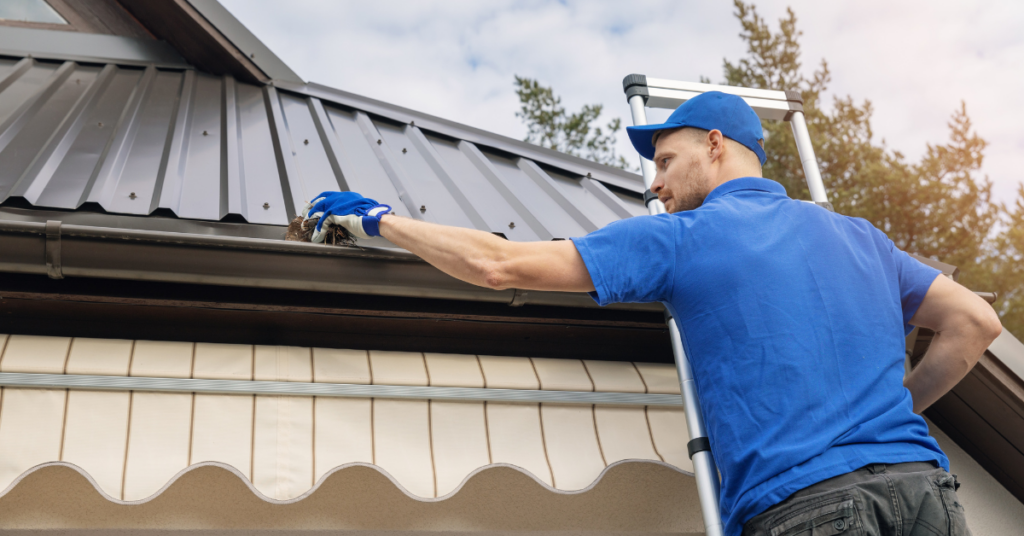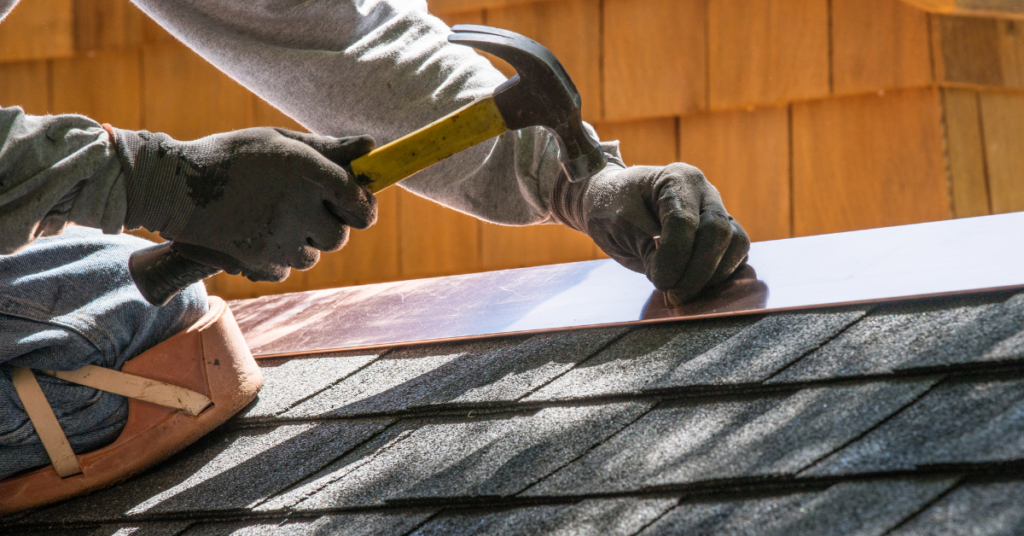As homeowners, we often focus on the more visible aspects of our homes, neglecting the hidden heroes that play a crucial role in maintaining structural integrity. One such unsung hero is the gutter flashing. While gutters are essential for diverting rainwater away from our homes, it’s the often-overlooked flashing that ensures this water doesn’t become an adversary. In this blog post, we’ll delve into the significance of flashing and guide you on how to check if it’s installed properly.

The Role of Gutter Flashing
1. Water Protection:
Gutter flashing acts as a protective barrier against water intrusion. It prevents rainwater from seeping into vulnerable areas, such as the joints between the roof and the walls, ultimately safeguarding your home against water damage.
2. Structural Integrity:
Properly installed flashing enhances the structural integrity of your home. By directing water away from critical areas, it mitigates the risk of foundation damage, rot, and other issues that can arise when water infiltrates the building envelope.
3. Prevention of Mold and Mildew:
Moisture is a breeding ground for mold and mildew. Gutter flashing plays a pivotal role in preventing excessive moisture from entering your home, reducing the likelihood of mold and mildew growth.
Signs of Improper Gutter Flashing
Before delving into how to check if your flashing is installed correctly, it’s crucial to recognize the signs that may indicate a problem:
1. Water Stains on Walls:
Water stains on interior or exterior walls are a clear indication that water is finding its way into your home. This could be due to inadequate gutter flashing that is allowing water to penetrate the building envelope.
2. Peeling Paint or Wallpaper:
Moisture infiltration can cause paint to peel or wallpaper to loosen. If you notice these signs, it’s essential to investigate the source, and often, improper gutter flashing is a contributing factor.
3. Rotting Wood:
Excess moisture can lead to the deterioration of wooden structures, which can lead to a need for roof replacement. Check for signs of rotting or warping in areas near your gutters, as this could be a result of ineffective flashing.
4. Sagging Gutters:
Improperly installed flashing may lead to sagging gutters, compromising their ability to effectively channel water away from your home.

How to Check Gutter Flashing Installation
Now that you’re aware of the signs of improper gutter flashing, let’s explore how to assess the installation:
1. Visual Inspection:
Begin with a visual inspection of your gutters and flashing. Look for any gaps, cracks, or visible damage. Pay close attention to the joints between the roof and the walls, as these are common areas where water intrusion can occur.
2. Check for Rust or Corrosion:
If your flashing is made of metal, such as aluminum or steel, check for rust or corrosion. Rust can compromise the integrity of the flashing, making it less effective in preventing water intrusion.
3. Ensure Overlapping Joints:
Gutter flashing should have overlapping joints to create a continuous barrier. Check that the flashing pieces are properly aligned and overlap without any gaps. This ensures a seamless defense against water infiltration.
4. Assess Sealing:
Adequate sealing is critical for the effectiveness of gutter flashing. Check for a waterproof seal along the edges and joints of the flashing. If you observe any signs of wear or deterioration, it may be time to reseal these areas.
5. Confirm Proper Slope:
Gutter flashing should be installed with a slight slope away from your home. This ensures that water is directed away from vulnerable areas. Use a level to confirm that your flashing is appropriately sloped.
The Importance of Professional Installation
While some homeowners may be inclined to tackle gutter flashing installation as a DIY project, it’s crucial to recognize the value of professional expertise. A skilled installer has the knowledge and experience to assess your specific home’s needs, ensuring that the flashing is customized and installed correctly.
In the grand scheme of home maintenance, flashing might seem like a minor detail. However, its role in protecting your home from water damage and maintaining its structural integrity is immense. Regular inspections and prompt action to address any issues are key to ensuring that your gutter flashing continues to serve as a reliable barrier against the elements.
If you suspect issues with your gutter flashing or simply want peace of mind, consider consulting with a professional. A thorough inspection and, if necessary, the installation of high-quality gutter flashing can be a small investment with significant long-term benefits for the well-being of your home.


